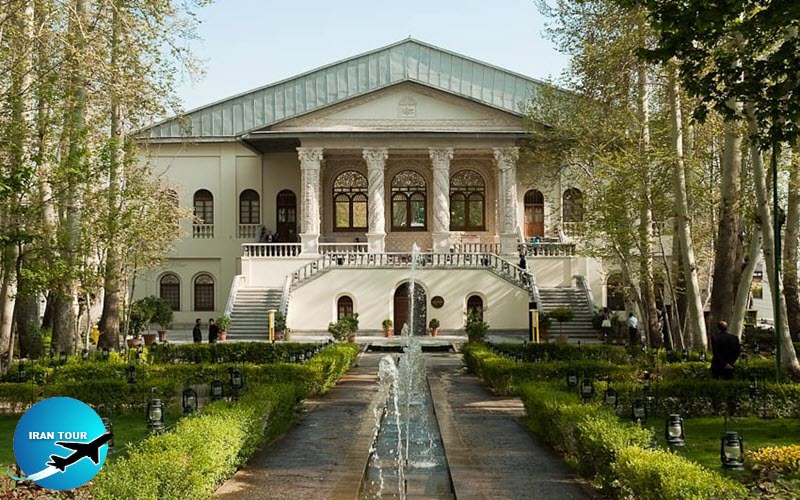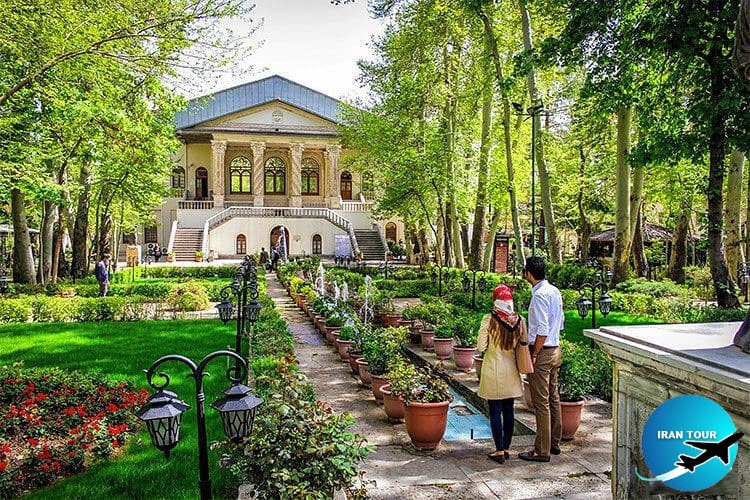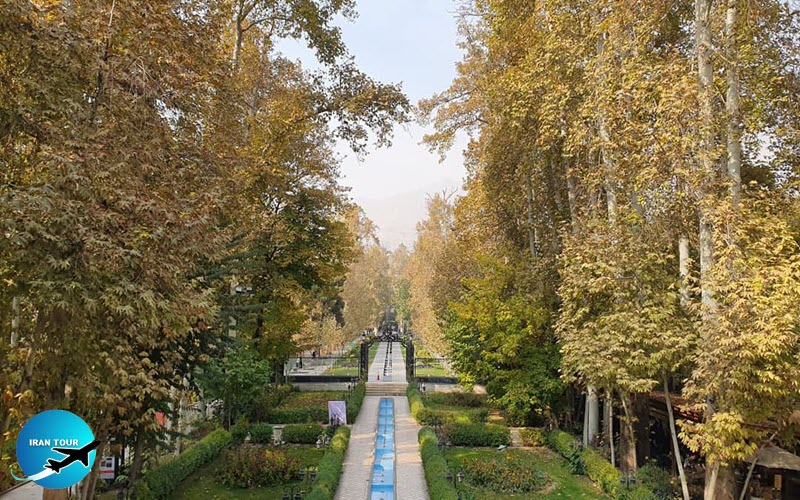Copyright 2020 - 2021 irantour.tours all right reserved
Designed by Behsazanhost
Ferdows Garden, Cinema Museum of Iran
Ferdows Garden, Cinema Museum of Iran
There is one of the most popular and longest streets known as Valiasr Street, around Tajrish Square, a busy and crowded street with sky tall trees hug each other and covered both sides of the street. Deluxe and luxurious shops and restaurants are seen on both sides of the street. Among these many shops and restaurants, a beautiful garden with a white mansion decorated with special stucco-workings and a pond stretches by the whole length of the garden, decorated with blue tiles and fountains, attract any attention to itself.
This garden is called Ferdows Garden (Garden of Paradise), nowadays the Cinema Museum of Iran and prepares a lovely and cozy atmosphere for all ages. Undoubtedly, this place brings you indescribable pleasure and enjoyment. If You are a fan of cinema and familiar with the history of cinema and artists, follow us to go to a cozy, beautiful, and lovely Mansion in north Tehran from the Qajar era, and become familiar with the achievements of Iranian cinema history and artists.
 |
History of Ferdowsi Garden
Ferdows Garden built during the reign of Mohammad Shah Qajar (1834-1848). The mansion and the current area of the garden in 1937 were bought by Aliasghar Hekmat, ministry education, and renovated in order to build Shabpur School. In 1957, this garden was divided between the Municipality and the Ministry of Education. Then after some renovation, the garden was donated to the Iranian Radio and Television Organization. Ferdows Garden in this period became a center for artistic activities. After the revolution of 1979, the garden became under the control of the Ministry of Islamic Culture And Guidance and it was used as a center for training film making. With the purpose of collecting preserving recording and supplying Iranian cinema heritage, the Cinema Museum of Iran was founded in September of 1994 by a Municipality-based cultural development company. By supporters of manny pioneer artists of our homeland, Iran, like Abbas Kiarostami and Ezatallah Entezami and valuable efforts of others like GholamrezaJamal Omidi Amir Esbati, Behzad Rahimi and Azizallah Saati arnold wish come true and the first building of the Cinema Museum founded in June 1998 in Lalehzar Street, Tehran. In 2001, based on a request from Cinema Museum Boarder, and by following acceptance of the Ministry of Islamic Culture and Guidance, the Mansion of Ferdowsi Garden was assigned to the Cinema Museum of Iran After preparing the mansion. transmitting and rearranging treasures, the Cinema Museum of Iran was reopened in this new place, Ferdows Garden, by September 2002. The mansion has a 1000 square meters area and it has three and a half floors. Due to the steep slope of the ground the first floor is at the same level as southeast of the garden and the roof of the first floor is at the same level with northern ground part of garden This aristocratic mansion had distinctive decoration and stucco workings from the very beginning, and even now you can see its beautiful stucco working in every room and saloon. Rounded arched-shaped windows with colored glasses of the mansion and its Mogharnas with their flowering designs create a spectacular atmosphere. The magnificent architecture of the mansion surprise anyone; there are two staircases on two sides of the mansion decorated with stucco pillars, lead you to the interior space.
 |
Different departments of the museum are:
Blue Hall:
In this hall visitors get familiar with the history of Ferdows Garden Cinema Museum of Iran advent of the world of cinema and advent of cinema in Iran and also there are pictures taken for the history of cinema by Photographer Mirza Ibrahim Khan the first movie advertisement in cinemas of Iran, and pictures of the first Iranian cinemas and filmmakers are in this hall. Introducing and pictures of Iranian cinema artists pioneers along with elementary filmmaking equipment in Iran and Syracuse University are interesting and attractive sections of this Hall.
 |
Middle Hall (Contemporaries):
In this hall, the portrait images of more than 700 film directors, actors, actresses, cinematographers, voice recorder, composers, dabbler, etc. are exhibited In addition, there are samples of designed scenes and designed clothes of Iranian cinema has been exhibited for visitors. Certainly, it would be attractive and fascinating to visit personal booths of Samuel Khakchian Fatemeh Moatamed Aria Malakeh Ranjbar, Sohrab Shahid Saless, Kiomars Pourahmad, Rasoul Sadrameli, etc. International Festival Hall: There are exhibited many world awards of Iran cinema such as Golden palm of Cannes, Venice lion Berlin beer and etc., and also you become familiar with Iran film festivals by visiting the statues of festivals awards with the pavilions and introduction of world honorable filmmakers of Iran cinemalike Abbas Kiarostami Abolfazl Jalili and etc. Cinema Hall: in this exhibition, you will be familiar with the cinema halls of the 1950 and 1960 decades, the first cinema halls, and bestselling Iran movies. Also, you can find some parts of the first movies in Iran cinema history. Alcove of Building (Ali Hatami Pavilion): in this exhibition, you can see the memorials of Ali Hatami statues of Ezatollah Entezami and Ali Hatami who are seeing HAJIWASHANGTON film, as well as the clothes that have been used by actors before and after the Islamic revolution of Iran 1979. Sound And Dubbing Exhibition: In this exhibition, you can see the old sound recording instruments and some of the first music film disks, the pavilion of Ali Kasmaie, the most famous dubber in Iran, and playback of first world classic dubbed movies. History Underpass Exhibition: There is a different experience by understanding the human efforts in the east to record the movement by seeing the display device moulage and goat jumper cup (2000 BC) as well as their success in discovering the rules governing the display by seeing the darkroom (12th century AD). In addition, in this exhibition you get familiar with some part of the first Iranian scripts to tell Shahnameh of Ferdowsiand Shadow Theater in China and India Armenians Room: Armenian has a prominent role in art-industry from the advent of cinema in Iran. The first tourism films are filmed by Armenians. This room has been launched to remind the role of Armenians in Iran cinema Eventually, 40 thousand pictures ofTrancinema and artists, more than 5 thousand volumes of cinema magazines, and 3 thousand pieces of historical documents, correspondence, and contracts, and about 350 tools and instruments, 2,500 cinema announcements, and thousand scripts are from valuable artistic and historic works of Cinema Museum of Iran.
- Details
- Category: Museums of Tehran